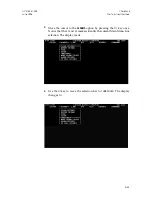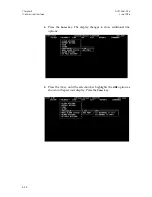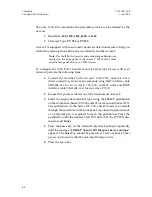
21.
Press the
Esc
key.
22.
Select the
SET MODEM DIALOUT
option.
23.
Select the
INACTIVITY TIMEOUTVALUE
. When communicating via SLIP or PPP,
the inactivity timer is reset each time a proper IP packet is received. When
the inactivity timer expires, a logout or connect termination occurs.
Note:
The Inactivity Timeout value also controls the
amount of time Access-T will accept inactivity on a
modem connection before disconnecting, prompting
the user for a password (if passwords are enabled), or
refreshes the terminal display (direct connection).
Key-in the desired value (in seconds). A setting of zero (0) disables
timeout. Press the
Esc
key.
Access-T has been fully configured to communicate with an SNMP manager.
For instructions on how to switch Access-T’s interface mode for SLIP or PPP,
refer to Changing Interface Protocols section at the end of this chapter.
Selecting the TABS (Node) Address
Whenever Access-Ts are chained (i.e., interconnected via their Chain Ports),
each Access-T on the chain must be given a unique node address. The node
address is used to identify the nodes in the chain for polling, alarm reporting,
and command forwarding.
In addition, since TABS commands include a node address, an Access-T which
will be receiving TABS commands from an NMS must be given a node address.
The Access-T node address is set via DIP switches, as described in Chapter 3.
For more information on the use of the node address in TABS commands, see
the Access-T TABS Interface Manual, ACST-0731-00x.
Setting the System Name
Access-T allows specification of a name which identifies the specific Access-T
on various Terminal Interface displays. Each Access-T can be given a name of
up to eight ASCII characters. This name is displayed in the right corner of the
Title Bar, which is included in every report.
Chapter 6
ACST-0351-005
Configuration Procedures
June 1996
6-8






























